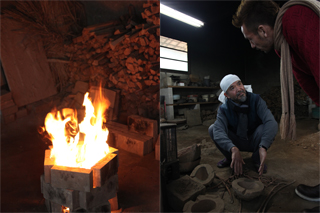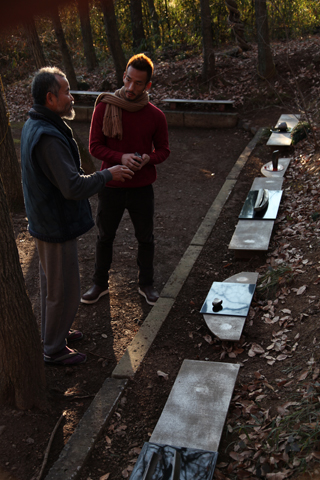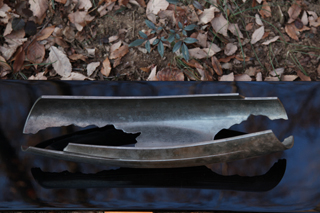 |
”Tenmyo imono”, Metal-casting with 1000 Year HistoryFor many years, Sano in Tochigi Prefecture has been known as the home of cast metal products. The history goes back more than 1000 years. It is believed that casting in Sano in the began in mid-Heian period (901 to 1068) when Hijiwara-no Hidesato who became Lord of Karasawa Castle in Sano brought some founders with him from Hikishou-cho, Tanan-gun in Kawachi country (presently Sakai City, Osaka Prefecture). Ever since, cast products ranging from daily supply to flower vase used in Buddhist altars were manufactured in Sano, became widely known and appreciated as ”Tenmyo imono (metal cast products)”. It is it said that Senno Rikyu, founder of tea ceremonies was an admirer of Tenmyo imono tea kettles. We visited Tadao Shoda, a descendant of the founder Mataemon Fujiwara Mitsukuni Shoda who immigrated to Sano in the mid Heian Period. He is an artist who inherited the long history of Tenmyo imono. |
Skills inherited from AncestorsShoda has won numerous awards, and is acknowledged both in Japan and overseas, but he says, ”I didn’t think I would enter the world of metal casting”. Hard to imagine from his background, being a descendant of founders going back as far as mid Heian Period, Toda spent some years as a business person after graduation before becoming a founder. Even so, he looks back and comments ”I would not be here if it weren’t for my ancestors”. When Toda felt uncomfortable working in an office as a business person, he thought of his father who also did not choose to be a founder at first but studied to become an author. Like his father, Toda later choose to be a founder and trained under his father. ”Our job cannot begin without the wisdom of our ancestors. For example, we use straw ash to accumulate and remove impurities from metal melted for casting. Why? Straw ash is the best. Our ancestors created this technique on their own, and we use the technique in this modern age. There are many like that in this job”. Many techniques pioneered by Shoda’s ancestors are incorporated even when creating modern art work with modern ideas. |
 |
 |
Polished to ShineCast-metal objects may well known for their brownish color such as tea kettles used in tea ceremonies, but Shoda is a particular about creating a silver color called ”oborogin” which is brought out by a balance of materials. It is not simply a glittering silver, but a color with a kind of heavy glow. Shoda’s artworks are made from copper alloy, and a ratio of 3 part copper and 1 part sliver brings out the silver tone with a heavy glow. He has pursued ”oborogin” for over 30 years. As a result, Toda has created beautiful and sublime flower vases and incense burners unique to himself. In order to bring out this color, finished cast-metal objects must be polished with sandpaper. This process is one which determine the color of the artwork, and so it requires most effort both mentally and physically. Everything must be polished out with utmost care to bring out Shoda’s color. Nakata experienced this process, and found it quite difficult. Polishing must be done attentively and with patience to achieve the unique silver tone. |
ACCESS
- Metal-casting Artist Tadao Shoda
- Kanahukicho, Sano, Tochigi
 Discovering Japan [Nihon] through authentic craftsmanship [Honmono]
Discovering Japan [Nihon] through authentic craftsmanship [Honmono]